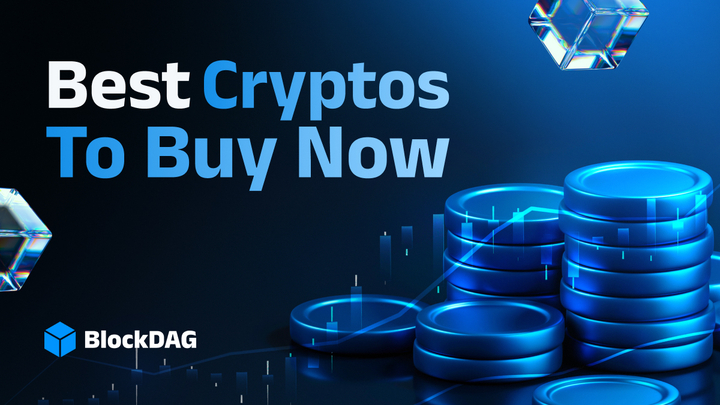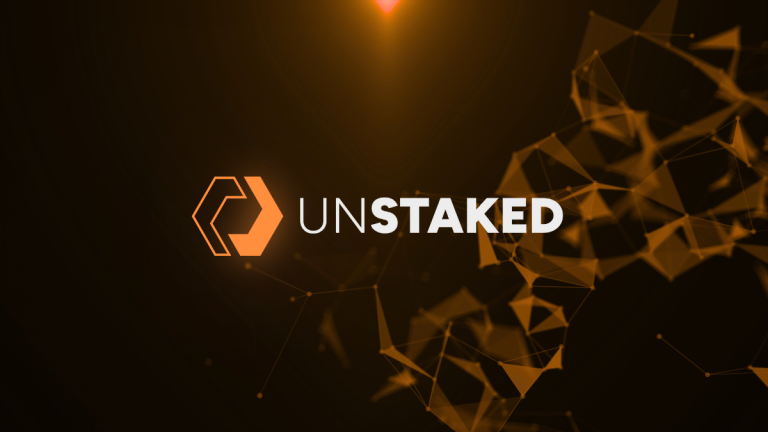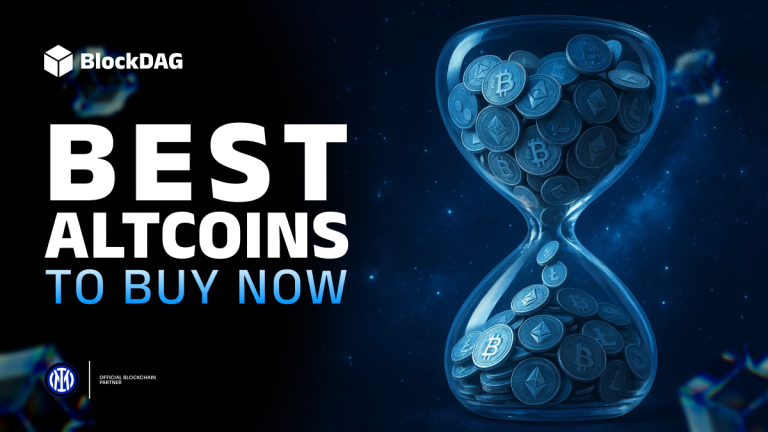Qubetics Emerges as the Best Crypto to Invest in May 2025 with Arbitrum and Tezos Driving Q2 Growth
Which Blockchain Will Lead Q2 as Arbitrum Scales, Tezos Engages, and Qubetics Emerges as the Best Crypto to Invest in May 2025?
Is May 2025 shaping up to be the turning point for institutional crypto adoption? Following a major announcement from Standard Chartered, the digital asset world is watching closely. The bank has officially partnered with FalconX to roll out an advanced settlement network tailored for hedge funds, sovereign wealth entities, and other large financial players. Their focus: removing friction from fiat-to-crypto transactions, improving speed, and slashing operational costs. The move is a strong signal that crypto infrastructure is maturing fast—and not just for individuals but for major institutional entities. This announcement arrives amid a broader shift in sentiment, where crypto is no longer on the sidelines but increasingly embedded into core financial systems. While many blockchain projects are still scrambling to align with this institutional pivot, Qubetics is already positioned to benefit—with a framework that’s built for seamless integration and real-world use.
Unlike earlier protocols that stopped at experimentation, Qubetics ($TICS) is designed for application. It addresses issues that legacy chains either ignored or couldn’t scale for, particularly when it comes to blockchain interoperability and decentralized wallet functionality. Its presale is gaining traction for a reason, and that reason is utility. While this article will dig deeper into Qubetics’ application and crypto presale mechanics, Tezos and Arbitrum are also making important moves worth following. Tezos is hosting a Toronto meetup on May 15th to expand its community and spotlight its evolving governance mechanisms. Arbitrum continues to push Ethereum scalability by streamlining transactions through ZK-proofs and decentralized access points. In a market where fundamentals are finally getting the spotlight they deserve, participants are increasingly weighing real-world solutions—and that’s exactly why Qubetics is being considered among the best crypto to invest in May 2025.
How Qubetics is Making Decentralized Wallets Work for Real People and Real Business
Qubetics isn’t chasing trends—it’s solving problems that most blockchain projects haven’t been able to address without sacrificing usability. At the heart of its utility is the Qubetics Wallet, a non-custodial, multi-chain wallet that connects the fragmented crypto ecosystem. Unlike traditional wallets that limit users to a single chain, this wallet enables seamless asset management across major networks. It’s also Visa and Mastercard-compatible, meaning everyday users can fund debit cards with their $TICS tokens and pay at any terminal that accepts major card providers. The integration with Apple Pay and Google Pay adds another layer of real-world functionality, allowing crypto to be spent as easily as fiat. For small business owners accepting $TICS tokens for services, this direct compatibility lowers the barrier to adoption without forcing them to understand complex blockchain infrastructure.
The wallet’s virtual card system also supports online and remote transactions—ideal for remote freelancers, international clients, and gig workers. Each virtual card can be instantly created, tracked, and if necessary, deactivated. This brings new layers of control and security that most crypto wallets simply don’t offer. Then there’s the smooth conversion mechanism, which auto-converts $TICS into stablecoins like USDT or USDC at the point of sale.
For example, if a customer uses Qubetics Wallet to pay for a product, the merchant immediately receives the fiat equivalent in stablecoins—completely bypassing volatility. This is especially useful for cross-border remittances or B2B payments. While the tech is sleek, the bigger value lies in how it connects users from different walks of life—whether it’s a Filipino caregiver sending money home from the U.S. or a logistics company paying multiple vendors across chains. These capabilities clearly explain why Qubetics is now being recognized as a top contender for the best crypto to invest in May 2025.
Tezos Meetup in Toronto Set to Spark Community-Driven Development
Tezos is preparing for a major engagement milestone by hosting a significant meetup in Toronto on May 15th. This event aims to deepen the platform’s roots in North America by building closer ties with developers, early adopters, and institutional participants. The event schedule includes tech presentations, informal talks, and booth interactions designed to enhance awareness about Tezos’ capabilities and future roadmap. By creating these physical touchpoints, Tezos strengthens its ecosystem and fosters dialogue around governance and smart contract innovation—both of which are foundational to its protocol.
The meetup also serves as a platform for showcasing Tezos’ Liquid Proof of Stake (LPoS) mechanism and its formal on-chain governance. These unique features are often underrepresented in mainstream coverage, but they play a critical role in enabling long-term scalability and network resilience. Rather than relying on off-chain discussions or manual upgrades, Tezos allows protocol changes to be decided and implemented entirely through its built-in governance system. This creates a more democratic model and invites active community participation. These strategic efforts place Tezos in a strong position to benefit from the rise of community-first blockchains and make its upcoming developments especially relevant during May 2025.
Arbitrum Scales Ethereum While Maintaining Decentralization and Speed
Arbitrum continues to solidify its role as a core Ethereum Layer 2 solution, as highlighted in a recent report by CoinShares. The project is focused on three critical pillars—accessibility, interoperability, and decentralization—all while ensuring scalability. Its use of ZK-proof technology and data availability sampling optimizes network efficiency without compromising trust. These advancements mean lower gas fees, faster transaction confirmations, and smoother dApp integration, positioning Arbitrum as a preferred network for developers looking to scale Ethereum-based projects.
Moreover, Arbitrum isn’t just about reducing congestion. It’s about future-proofing Ethereum’s infrastructure so that it can handle higher volumes as adoption rises. The report points out that Arbitrum’s technical upgrades are expected to significantly ease Ethereum’s current limitations. As demand for L2s grows, Arbitrum’s ability to offer seamless transitions between L1 and L2 environments places it at the forefront of blockchain scalability discussions. These enhancements make Arbitrum especially significant in a market where users are prioritizing usability and efficiency in their crypto selections.
The partnership between Standard Chartered and FalconX signals one of the most meaningful institutional shifts in recent memory. By focusing on fiat-to-crypto settlement rails for funds and banks, the collaboration is ushering in a new phase where crypto isn’t just tolerated by institutions—it’s being integrated into their core operations. This is huge for protocols like Tezos and Arbitrum, which already offer scalable governance and Ethereum-enhancing infrastructure respectively.
For Qubetics, the timing couldn’t be better. Its structured weekly price increase model and weekly presale rhythm provides a level of predictability that aligns well with institutional standards. With its mainnet scheduled to launch in Q2 2025 and growing presale momentum, Qubetics is presenting itself as a low-barrier, high-utility project at just the right moment. Whether you’re looking at real-world adoption, user experience, or protocol governance, these three projects—Qubetics, Tezos, and Arbitrum—are all poised to benefit from the growing tide of institutional participation.
Conclusion: Choosing Utility, Structure, and Real-World Value This May
As institutional adoption continues to reshape crypto’s future, projects that bring clarity, utility, and consistent structure are taking the lead. Qubetics is emerging with strong foundational infrastructure and real-world use cases that directly answer what many protocols left unsolved. Its structured approach and active Qubetics presale have introduced a compelling opportunity for early participants.
Tezos, meanwhile, is leveraging its unique governance and community engagement through real-time events, strengthening its presence in key markets. Arbitrum maintains its position as the go-to Ethereum scaling layer with strong technical innovation. For participants seeking the best crypto to invest in May 2025, it’s clear that each of these projects delivers value in different but equally impactful ways. Those aiming to join this best crypto presale would be wise to assess both utility and momentum before the next cycle intensifies.
For More Information:
Qubetics: https://qubetics.com
Presale: https://buy.qubetics.com/
Telegram: https://t.me/qubetics
Twitter: https://x.com/qubetics
FAQs
What is the current stage and price of the Qubetics presale?
Qubetics is currently in Stage 34, with each $TICS token priced at $0.2532.
Why is Qubetics being discussed among the best crypto to invest in May 2025?
Because of its unique wallet features, structured presale, and upcoming mainnet launch in Q2 2025.
What’s the appeal of the Qubetics presale compared to others?
Its predictable 10% weekly price increase and transparent schedule make it one of the best crypto presale options right now.
| Disclaimer: The text above is an advertorial article that is not part of bitcoininfonews.com editorial content. |






